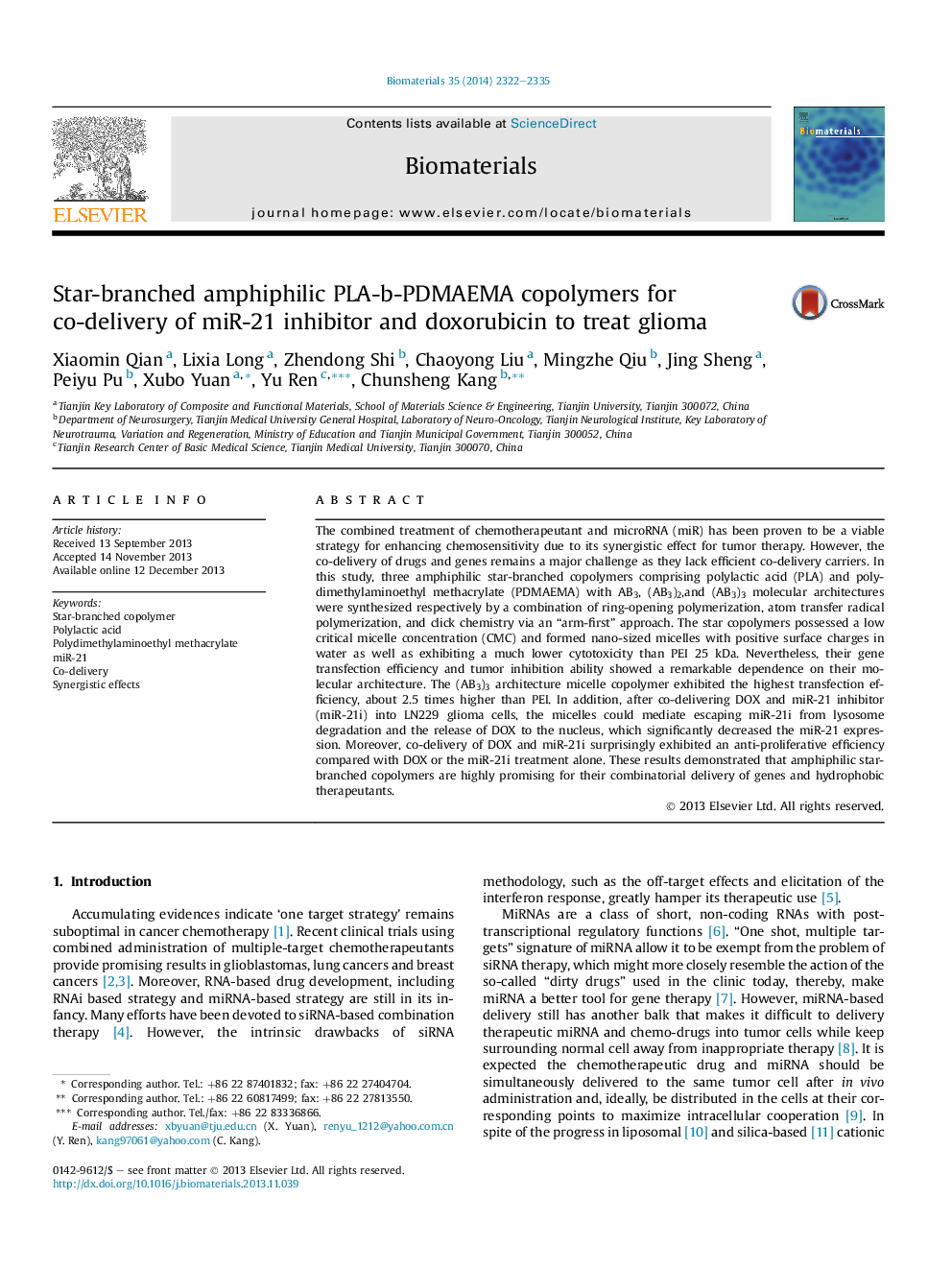| Article ID | Journal | Published Year | Pages | File Type |
|---|---|---|---|---|
| 10228402 | Biomaterials | 2014 | 14 Pages |
Abstract
The combined treatment of chemotherapeutant and microRNA (miR) has been proven to be a viable strategy for enhancing chemosensitivity due to its synergistic effect for tumor therapy. However, the co-delivery of drugs and genes remains a major challenge as they lack efficient co-delivery carriers. In this study, three amphiphilic star-branched copolymers comprising polylactic acid (PLA) and polydimethylaminoethyl methacrylate (PDMAEMA) with AB3, (AB3)2,and (AB3)3 molecular architectures were synthesized respectively by a combination of ring-opening polymerization, atom transfer radical polymerization, and click chemistry via an “arm-first” approach. The star copolymers possessed a low critical micelle concentration (CMC) and formed nano-sized micelles with positive surface charges in water as well as exhibiting a much lower cytotoxicity than PEI 25Â kDa. Nevertheless, their gene transfection efficiency and tumor inhibition ability showed a remarkable dependence on their molecular architecture. The (AB3)3 architecture micelle copolymer exhibited the highest transfection efficiency, about 2.5 times higher than PEI. In addition, after co-delivering DOX and miR-21 inhibitor (miR-21i) into LN229 glioma cells, the micelles could mediate escaping miR-21i from lysosome degradation and the release of DOX to the nucleus, which significantly decreased the miR-21 expression. Moreover, co-delivery of DOX and miR-21i surprisingly exhibited an anti-proliferative efficiency compared with DOX or the miR-21i treatment alone. These results demonstrated that amphiphilic star-branched copolymers are highly promising for their combinatorial delivery of genes and hydrophobic therapeutants.
Related Topics
Physical Sciences and Engineering
Chemical Engineering
Bioengineering
Authors
Xiaomin Qian, Lixia Long, Zhendong Shi, Chaoyong Liu, Mingzhe Qiu, Jing Sheng, Peiyu Pu, Xubo Yuan, Yu Ren, Chunsheng Kang,
